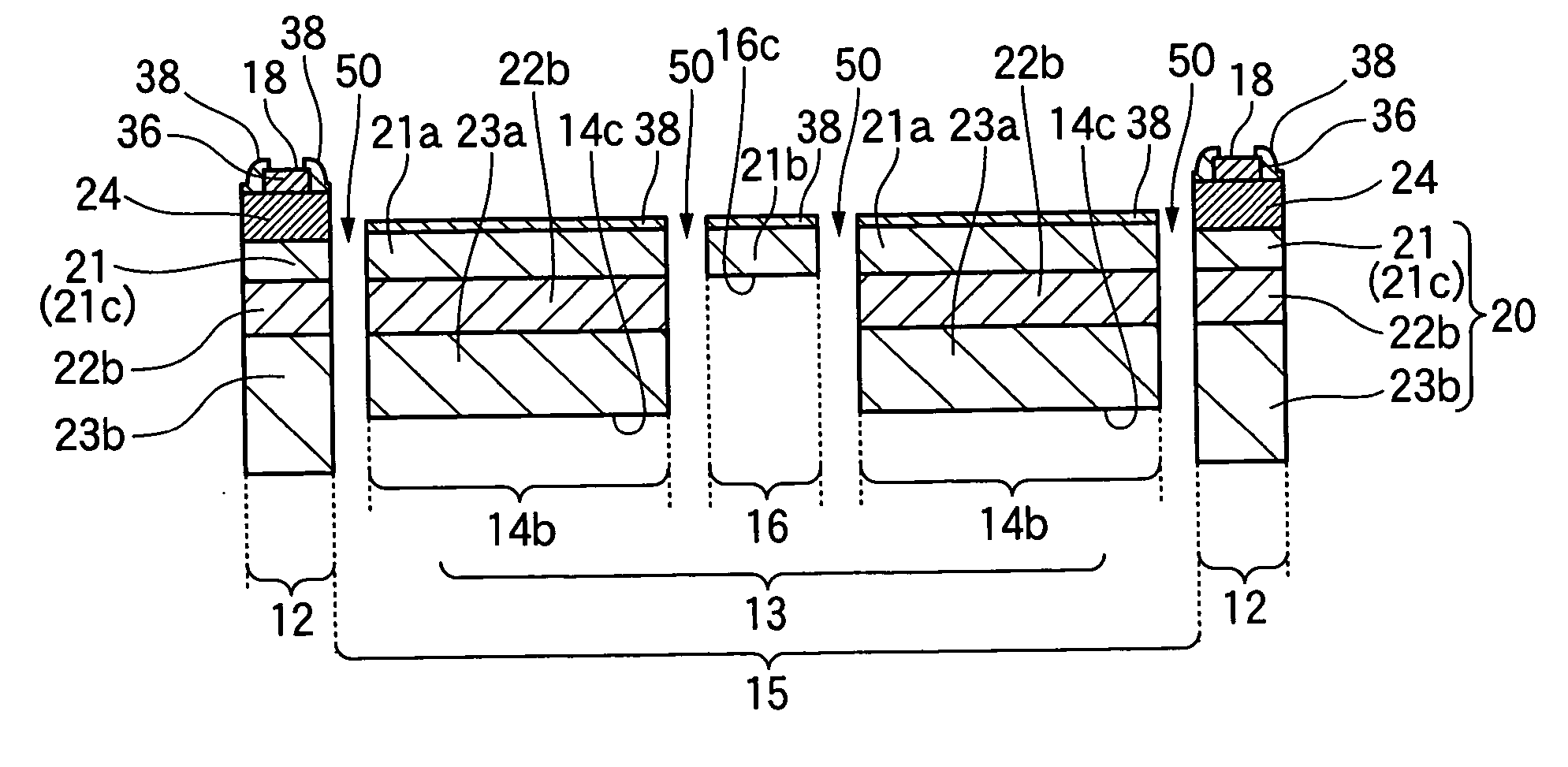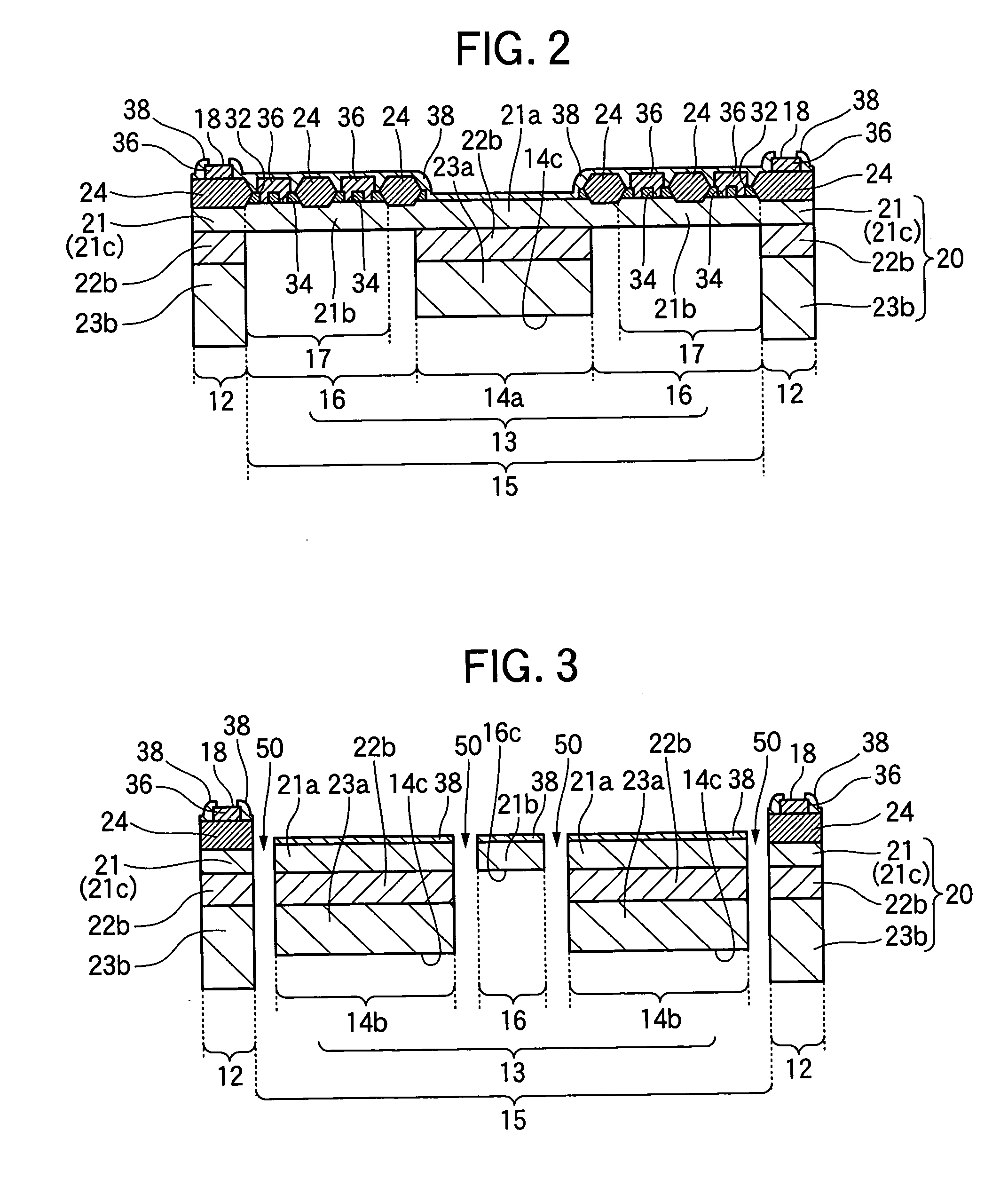Method of manufacturing a micro-electrical-mechanical system
a manufacturing method and micro-electrical technology, applied in the direction of microstructural devices, acceleration measurement using interia forces, coatings, etc., can solve the problems of low yield, undesirable long and complex manufacturing methods, and beams that are vulnerable to damag
- Summary
- Abstract
- Description
- Claims
- Application Information
AI Technical Summary
Benefits of technology
Problems solved by technology
Method used
Image
Examples
first embodiment
[0033] The adhesive sheet in the first embodiment is a so-called UV sheet. The term UV sheet is used herein to denote a flat sheet made of a base material such as polyester, having on one surface an adhesive substance, the adhesive strength of which is weakened by exposure to ultraviolet (UV) light.
[0034] Two slightly different fabrication methods conforming to the first embodiment will be described with reference to FIGS. 5 to 18. These drawings show one representative acceleration sensor among the plurality of acceleration sensors that are simultaneously fabricated in a single wafer substrate. Each acceleration sensor 10 has the exemplary structure shown in FIGS. 1-4.
[0035] Both fabrication methods start from a semiconductor substrate 20 having a first major surface 20a (defined as the front surface or upper surface) and a second major surface 20b (defined as the back surface or lower surface) as shown in FIG. 5. The semiconductor substrate 20 comprises a sacrificial layer 22 sa...
second embodiment
[0070] The second embodiment replaces the UV sheet used in the first embodiment with a so-called thermal release sheet. The thermal release sheet is an adhesive sheet having an adhesive that weakens when heated to a predetermined temperature, so that the sheet peels away easily from the object to which it is attached. In other respects, the second embodiment is similar to the first embodiment.
[0071] A first fabrication method according to the second embodiment of the invention will now be described. In the first fabrication method, after the precursor microstructure 13a has been formed, the semiconductor substrate 20 is secured to an adhesive sheet of the thermal release type and diced into chips; then the microstructure in each chip is completed by removing the sacrificial layer, after which the adhesive sheet is heated and peeled off. All processes preceding the attachment of the adhesive sheet are substantially the same as in the first embodiment, so detailed descriptions will b...
PUM
| Property | Measurement | Unit |
|---|---|---|
| sizes | aaaaa | aaaaa |
| temperature | aaaaa | aaaaa |
| pressure | aaaaa | aaaaa |
Abstract
Description
Claims
Application Information
 Login to View More
Login to View More - R&D
- Intellectual Property
- Life Sciences
- Materials
- Tech Scout
- Unparalleled Data Quality
- Higher Quality Content
- 60% Fewer Hallucinations
Browse by: Latest US Patents, China's latest patents, Technical Efficacy Thesaurus, Application Domain, Technology Topic, Popular Technical Reports.
© 2025 PatSnap. All rights reserved.Legal|Privacy policy|Modern Slavery Act Transparency Statement|Sitemap|About US| Contact US: help@patsnap.com



